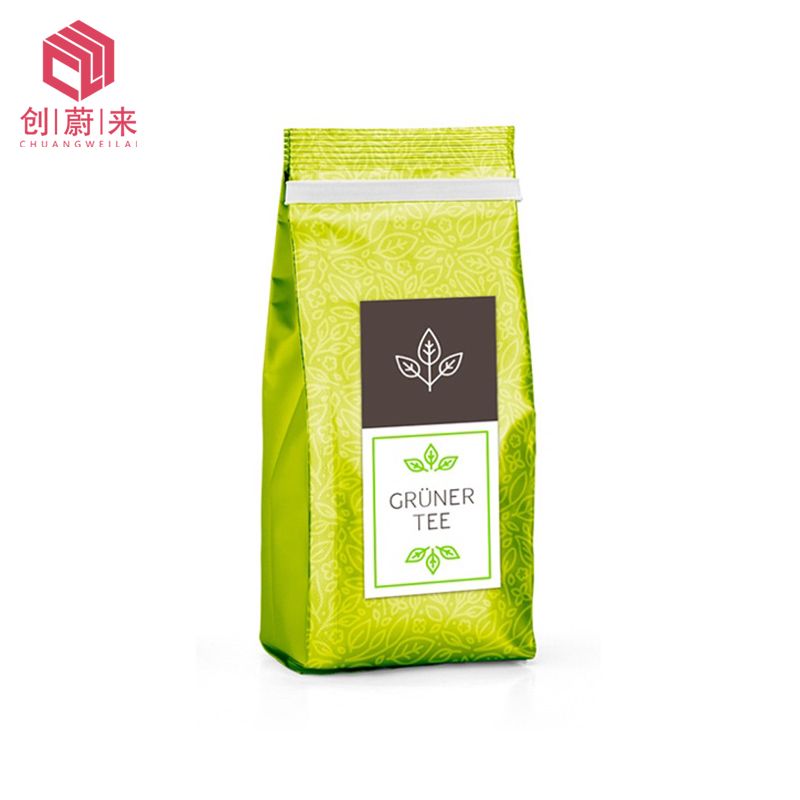In the world of coffee and tea, packaging is not merely a means of storage and transportation; it's a reflection of the product's quality and identity. The packaging materials chosen for coffee and tea play a crucial role in preserving freshness, protecting flavors, and enticing consumers. In this article, we will delve into the diverse packaging materials used for coffee and tea, exploring their properties, benefits, and their impact on the world of beverage packaging.

Traditional Paper Packaging:
Traditional paper packaging has long been a staple in the world of tea. It includes paper bags, envelopes, and cartons. These materials are known for their natural and eco-friendly characteristics. They are biodegradable, recyclable, and can be composted, making them a sustainable choice for eco-conscious consumers. The paper's porosity allows teas to breathe, maintaining their freshness and aroma.
Tin Tie Bags:
Tin tie bags combine the convenience of resealability with the natural aesthetic of paper. These bags are often used for loose leaf teas and coffee beans. The tin tie closure helps seal in freshness, ensuring that the contents remain aromatic and flavorful. Additionally, they are customizable, allowing brands to create a unique look and feel for their products.
Foil Bags:
Foil bags are a popular choice for both coffee and tea packaging. These bags consist of a foil layer laminated with plastic or paper. The foil layer provides excellent protection against light, moisture, and oxygen, which are known to degrade the quality of coffee and tea. Foil bags are also resealable, making them ideal for preserving freshness after opening.
Biodegradable and Compostable Materials:
With the growing emphasis on sustainability, many coffee and tea brands are opting for biodegradable and compostable packaging materials. These materials are typically made from plant-based sources like cornstarch, sugarcane, or PLA (Polylactic Acid). They break down naturally in the environment, leaving behind minimal environmental impact.
Plastic Packaging:
While plastic packaging is often criticized for its environmental impact, it still holds a significant share in coffee and tea packaging. Plastic materials like PET (Polyethylene Terephthalate) are lightweight, durable, and cost-effective. Brands often use PET bottles for ready-to-drink iced teas and cold brew coffee. However, there is a growing trend toward using recycled or recyclable plastics to mitigate the environmental footprint.
Glass Jars:
Glass jars are synonymous with premium tea and coffee packaging. They offer an elegant and transparent showcase for the product, allowing consumers to see the quality and appearance of the contents. Glass is impermeable, preserving the flavors and aroma of the beverage. Additionally, glass jars are recyclable and can be repurposed for other uses.
Aluminum Cans:
Aluminum cans have gained popularity as a packaging material for both coffee and tea, especially for ready-to-drink products. Aluminum is lightweight, recyclable, and offers excellent protection against light and oxygen, ensuring the product's freshness. It is also known for its cooling properties, making it a preferred choice for iced coffee and tea beverages.
Vacuum-Sealed Bags:
Vacuum-sealed bags are designed to remove air from the packaging, creating a vacuum environment. This process helps extend the shelf life of coffee and tea by preventing oxidation. These bags are often used for ground coffee and specialty teas, preserving their flavors and aroma until they are opened.
Kraft Paper Stand-Up Pouches:
Stand-up pouches made from kraft paper offer a combination of sustainability and functionality. They are sturdy, provide a large printable surface for branding, and feature a resealable zipper for convenience. The kraft paper gives a rustic and artisanal appearance, appealing to consumers seeking an authentic experience.
Wooden Boxes:
Wooden boxes evoke a sense of luxury and craftsmanship. They are often used for premium teas and specialty coffees. These boxes can be engraved or branded, creating a lasting impression on customers. Wooden boxes are reusable and can serve as decorative storage containers long after the coffee or tea has been consumed.
Conclusion
In the world of coffee and tea packaging, the choice of materials is not just a matter of practicality but also a reflection of brand identity and values. Whether it's the eco-friendly charm of traditional paper packaging, the freshness-preserving properties of foil bags, or the premium appeal of glass jars, each material serves a unique purpose.
With sustainability becoming increasingly important, brands are exploring biodegradable and compostable options to reduce their environmental impact. Additionally, innovative packaging solutions like vacuum-sealed bags and kraft paper stand-up pouches offer both functionality and aesthetics.
Ultimately, the right packaging material depends on the product, brand identity, and target audience. As the coffee and tea industry continues to evolve, packaging materials will play an integral role in shaping consumer perceptions and ensuring the quality and freshness of these beloved beverages.
Welcome to create your very own printed stand up pouch, flat pouch, spout pouch, flat bottom pouch, gusset pouch and etc.. CWL Packaging offers a fully custom service to suit your brand and products with competitive pricing and a commitment to customer service.




Comments
Please Join Us to post.
0